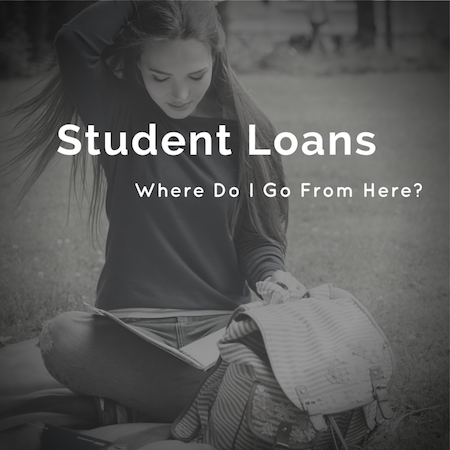Some Hope For Student Loan Holders
/![]() If you have student loans, figuring out the best option for paying them off is one of the most important things you can do for your financial future. But we should all be keeping an eye on the changes to how Americans will pay for higher education. Here are some of the new or potential changes in student loan laws and regulations...
If you have student loans, figuring out the best option for paying them off is one of the most important things you can do for your financial future. But we should all be keeping an eye on the changes to how Americans will pay for higher education. Here are some of the new or potential changes in student loan laws and regulations...
Income Based Repayment Improvements
Income Based Repayment plans are only for federal student loans that are not currently in default (those who are in default can access them once they've gone through a loan rehabilitation period). At first, they limited your payments to 25 years and no more than 15% of your income; some now limit payment to 20 years and 10% income. What we have currently is a confusing tangle of IBR-type programs with slightly different names and terms depending on when you took out your loans. But with student loans a hot topic in Congress and the press, there is talk of making the better terms available to more existing student loan holders. To see where you stand right now, check out IBR Info's very helpful site.
Refinancing Options
 There are plenty of private banks ready to help you refinance your student loans by moving your debt over to them. Given the ridiculously high fixed interest rates on many of our federal student loans, this could be a great move. Unfortunately, you have to qualify for the new rate with a private lender and, in many cases, end up paying origination fees or variable interest rates that will go up later. More disturbingly, you lose the protections offered by federal loans.
There are plenty of private banks ready to help you refinance your student loans by moving your debt over to them. Given the ridiculously high fixed interest rates on many of our federal student loans, this could be a great move. Unfortunately, you have to qualify for the new rate with a private lender and, in many cases, end up paying origination fees or variable interest rates that will go up later. More disturbingly, you lose the protections offered by federal loans.
Recently, some of our Members of Congress have suggested that the Fed's should also be refinancing—going back to lower the rates for students paying far more than if they had borrowed under recent loan programs. So far, this hasn't worked, but with some loan holders paying 8.5% for 20 to 30 years while others pay only 6%, our current system raises questions about just how fairly the government is treating its students. How much are you paying?
Bankruptcy for Private Loans
There have been rumors around for a long time that it is impossible to discharge student loans in bankruptcy. In fact, Congress did make it extremely difficult. And given the options for repayment available through federal consolidation loans, it would be hard to convince a bankruptcy court that your federal student loans are an undue hardship that can't be addressed except through bankruptcy. But this argument doesn't hold for private student loans, and since 2005, private loans have also had the benefit of extra bankruptcy protection. The Fairness For Struggling Students Act of 2015 (S.729) would get rid of extra challenges to discharging private student loans in bankruptcy. The Student Loan Borrower Assistance site offers a good run down on what the laws are.
Better Programs for Extreme Need

Once upon a time we had Pell grants (not loans!), Stafford Subsidized Loans and Perkins Loans that covered all or most of tuition costs for students who had extreme financial need. Since then, tuitions (and other costs) have soared while federal programs to help wilted. Even if Congress can't keep up with the irrational hikes in higher ed costs, a better tracking of inflation would make a big difference in getting upwardly mobile students, well, upward. Want to see the difference between a subsidized and an unsubsidized loan? Click on the image to see a comparison:
Change The Whole System?
This one is a long shot—but not as much of a long shot as it was even a few years ago. We seem to have reached unanimous agreement that we are doing now just doesn't work. Is the solution to make all student tuition costs into a form of IBR program? To follow the lead of Germany and other countries in which nationally funded higher ed programs are free? To tax the industries that benefit most from our higher education systems and use that to pay for undergraduate degrees?
What is your idea for making higher education accessible to all Americans without leaving our country in debt?





